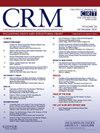Long-term outcomes of unselected patients undergoing coronary angiography according to the presence or absence of type II diabetes mellitus
IF 1.9
Q3 CARDIAC & CARDIOVASCULAR SYSTEMS
引用次数: 0
Abstract
Objective
The study investigates long-term outcomes of unselected inpatients undergoing invasive coronary angiography (CA) with and without diabetes mellitus type II (T2DM).
Background
Due to continual shifts in demographics and advancements in treating cardiovascular disease, there has been a notable evolution in the types of patients undergoing CA over the past decades. Comprehensive data on the extended outcomes of CA patients, both with and without concurrent T2DM, remains scarce.
Methods
Consecutive inpatients undergoing invasive CA from 2016 to 2022 were included at one institution. The prognosis of T2DM in patients undergoing CA was investigated with regard to the risk rehospitalization for heart failure (HF), acute myocardial infarction (AMI) and coronary revascularization at 36 months of follow-up. Statistical analyses included Kaplan-Meier uni- and multivariable Cox proportional regression analyses.
Results
From 2016 to 2022, 7150 patients undergoing CA were included with a prevalence of T2DM of 31.2 %. Compared to non-diabetics, patients with T2DM had a higher prevalence (78.0 % vs. 64.3 %; p = 0.001) and extent (3-vessel disease: 36.9 % vs. 23.8 %; p = 0.001) of coronary artery disease (CAD). At 36 months, patients with T2DM had a higher risk rehospitalization for worsening HF (29.0 % vs. 18.2 %; p = 0.001), AMI (9.9 % vs. 6.6 %; p = 0.001), alongside with a higher need for coronary revascularization (10.7 % vs. 7.2 %; p = 0.001) compared to patients without. Even after multivariable adjustment, the risk of rehospitalization for HF (HR = 1.229; 95 % CI 1.099–1.374; p = 0.001), AMI (HR = 1.270; 95 % CI 1.052–1.534; p = 0.013) and coronary revascularization (HR = 1.457; 95 % CI 1.213–1.751; p = 0.001) was higher in patients with T2DM. Especially in patients with left ventricular ejection fraction (LVEF) ≥ 35 %, T2DM was associated with a higher risk of AMI- (HR = 1.395, 95 % CI: 1.104 – 1.763, p = 0.005) and PCI-related rehospitalization (HR = 1.442, 95 % CI: 1.185 – 1.775, p = 0.001).
Conclusion
In unselected patients undergoing CA, T2DM represents an independent predictor of HF-related rehospitalization, AMI- and for PCI- at 36 months.
根据2型糖尿病的存在与否,未选择接受冠状动脉造影的患者的长期预后。
目的:研究合并和不合并2型糖尿病(T2DM)的非选择性住院患者行有创冠状动脉造影(CA)的长期预后。背景:由于人口结构的不断变化和心血管疾病治疗的进步,在过去的几十年里,接受CA的患者类型发生了显著的变化。关于合并或不合并T2DM的CA患者扩展结局的综合数据仍然很少。方法:选取2016 - 2022年在同一医院连续接受有创CA的住院患者。在随访36个月时,研究T2DM患者行CA后发生心力衰竭(HF)、急性心肌梗死(AMI)和冠状动脉血运重建术的风险。统计分析包括Kaplan-Meier单变量和多变量Cox比例回归分析。结果:从2016年到2022年,7150例CA患者被纳入,T2DM患病率为31.2%。与非糖尿病患者相比,T2DM患者的患病率更高(78.0% vs. 64.3%;P = 0.001)和程度(3支血管疾病:36.9% vs. 23.8%;p = 0.001)的冠状动脉疾病(CAD)。36个月时,T2DM患者因心衰恶化再住院的风险更高(29.0% vs. 18.2%;p = 0.001), AMI (9.9% vs. 6.6%;P = 0.001),同时冠状动脉重建术的需求更高(10.7% vs. 7.2%;P = 0.001)。即使在多变量调整后,HF再住院的风险(HR = 1.229;95% ci 1.099-1.374;p = 0.001), AMI (HR = 1.270;95% ci 1.052-1.534;p = 0.013)和冠状动脉重建术(HR = 1.457;95% ci 1.213-1.751;p = 0.001)在T2DM患者中更高。特别是在左室射血分数(LVEF)≥35%的患者中,T2DM与AMI (HR = 1.395, 95% CI: 1.104 ~ 1.763, p = 0.005)和pci相关再住院(HR = 1.442, 95% CI: 1.185 ~ 1.775, p = 0.001)的风险较高相关。结论:在未选择的CA患者中,T2DM是36个月时hf相关再住院、AMI和PCI的独立预测因子。
本文章由计算机程序翻译,如有差异,请以英文原文为准。
求助全文
约1分钟内获得全文
求助全文
来源期刊

Cardiovascular Revascularization Medicine
CARDIAC & CARDIOVASCULAR SYSTEMS-
CiteScore
3.30
自引率
5.90%
发文量
687
审稿时长
36 days
期刊介绍:
Cardiovascular Revascularization Medicine (CRM) is an international and multidisciplinary journal that publishes original laboratory and clinical investigations related to revascularization therapies in cardiovascular medicine. Cardiovascular Revascularization Medicine publishes articles related to preclinical work and molecular interventions, including angiogenesis, cell therapy, pharmacological interventions, restenosis management, and prevention, including experiments conducted in human subjects, in laboratory animals, and in vitro. Specific areas of interest include percutaneous angioplasty in coronary and peripheral arteries, intervention in structural heart disease, cardiovascular surgery, etc.
 求助内容:
求助内容: 应助结果提醒方式:
应助结果提醒方式:


